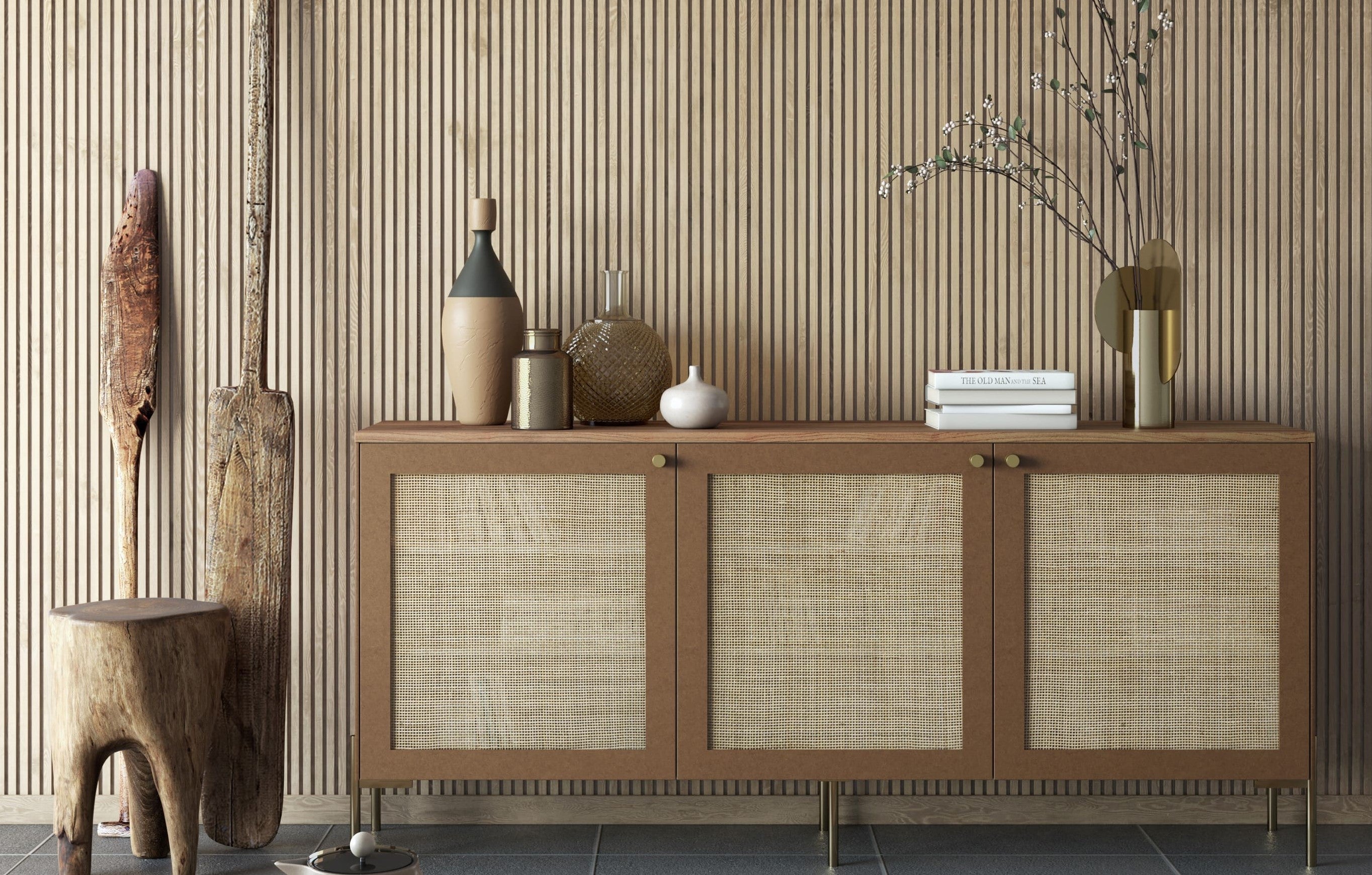With origins dating back to the early 20th century, Scandinavian design emerged from the talents of Nordic visionaries across Denmark, Sweden, Norway, Finland, and Iceland. What began as a refined yet accessible aesthetic representing the region's embrace of functionalism and truth to materials quickly gained global admiration. Today, this minimalist interior design style remains a favorite for creating calming, stylish, and purposeful spaces that elevate the human experience. Its enduring popularity is a testament to how artfully Scandinavian design translates core cultural values like warmth, comfort, connection to nature, and environmental consciousness into physical spaces.
Key principles of Scandinavian design
A. Simplicity and minimalism
At its core, Scandinavian aesthetics eschew excess in favor of simplicity, clean lines, modest ornamentation, and airy, clutter-free spaces. Each decor piece is purposefully selected, creating an intentional, edited environment that exudes sophisticated restraint.
B. Natural materials
Scandinavian design has a deep reverence for incorporating natural materials like wood, leather, wool, cotton, sheepskin, jute, and linen into spaces. Their rich tones, varied textures, and unique imperfections connect the indoors to the outdoors while cultivating warmth and coziness. Common uses include exposed wooden beams, leather upholstery, wool area rugs, and linen curtains.
Image from axxla.com I Interior design
C. Functionality and practicality

Norse Interiors' product in the image: Sektion cane doors
D. Light and airy spaces
With long Scandinavian winters restricting natural light, strategic ways of maximizing available sunlight became ingrained into design principles. Pale wall colors like white, ivory, and pale grays help reflect light, while strategic window and skylight placement captures ample illumination. Carefully edited decor, mirrored accents, and open floor plans enhance the overall sense of airiness.
E. Neutral color palettes
In keeping with nature's understated tones, Scandinavian environments embrace a primarily neutral, monochromatic color palette of whites, grays, tans, browns, blacks, and muted blues or greens. These soft, calming hues provide the ideal backdrop for allowing pops of brighter accent colors to create visual interest and focal points. The overall effect is one of tranquility and quietness.
Image from Pinterest
Examples of Scandinavian design elements
A. Furniture
Iconic mid-century modern chairs with sculpted wood frames; low-profile, tailored sofas; platform beds; bentwood and Windsor chairs; extendable wooden dining tables
B. Textiles
Thick-woven wool blanket throws; gauzy linen curtain panels; natural fiber area rugs like jute, sisal, and cowhide; sheepskin accent pieces
C. Lighting
Artfully sculpted pendant lamps; sleek, understated floor lamps; sculptural table lamps; all featuring clean metallic finishes and cylindrical shapes.
D. Decor
Lush, thriving houseplants and terrariums; beautifully framed yet minimalist art in black and white or featuring nature scenes; glazed ceramic vases, bowls, and planters featuring muted tones and organic shapes.
Benefits of embracing Scandinavian design
A. Creates a calm and relaxing environment
With its spare aesthetic, connection to nature, and emphasis on functionality over embellishment, Scandinavian design cultivates an unmistakably tranquil, serene atmosphere ideal for today's over-scheduled and stress-filled lifestyles. Embracing this style is an invitation to shed the excess and make room for simple joys.
B. Promotes sustainability and eco-Friendliness
Thanks to its focus on craftsmanship over mass production, long-lasting natural materials, and versatile multi-purpose pieces designed for adaptability, adhering to Scandinavian fundamentals encourages low-consumption, low-waste habits aligned with sustainable living.
C. Timeless and classic aesthetics
Unlike many passing decor fads, Scandinavian design tenets have spanned decades and still feel remarkably modern. Its clean lines, honest materiality, and celebration of indoor-outdoor connectedness create enduring spaces that never feel dated. This lasting quality ensures interiors retain their stylishness for years to come.

Norse Interiors' products in the image: Besta white oak doors, Sara brass legs, Ilse black legs, & Agnes brass pull.
With their ability to seamlessly blend modern needs with an appreciation for purposeful, uncomplicated living, Scandinavian design principles have proven to be more than just a passing creative movement. Through an intelligent use of natural elements, subdued color palettes, and an emphasis on indoor-outdoor integration, this minimalist Scandinavian style effortlessly melds form and function to create highly livable, beautiful spaces that enrich daily life. Its timeless versatility makes it an excellent foundation for any interior seeking to cultivate warmth, serenity, and enduring style.
Schedule a 1-on-1 design consultation for your Scandi proejct. Book your video call today!
-----------
You might also like: How to incorporate Scandinavian design into your home
For more inspiration, follow @norseinteriors
